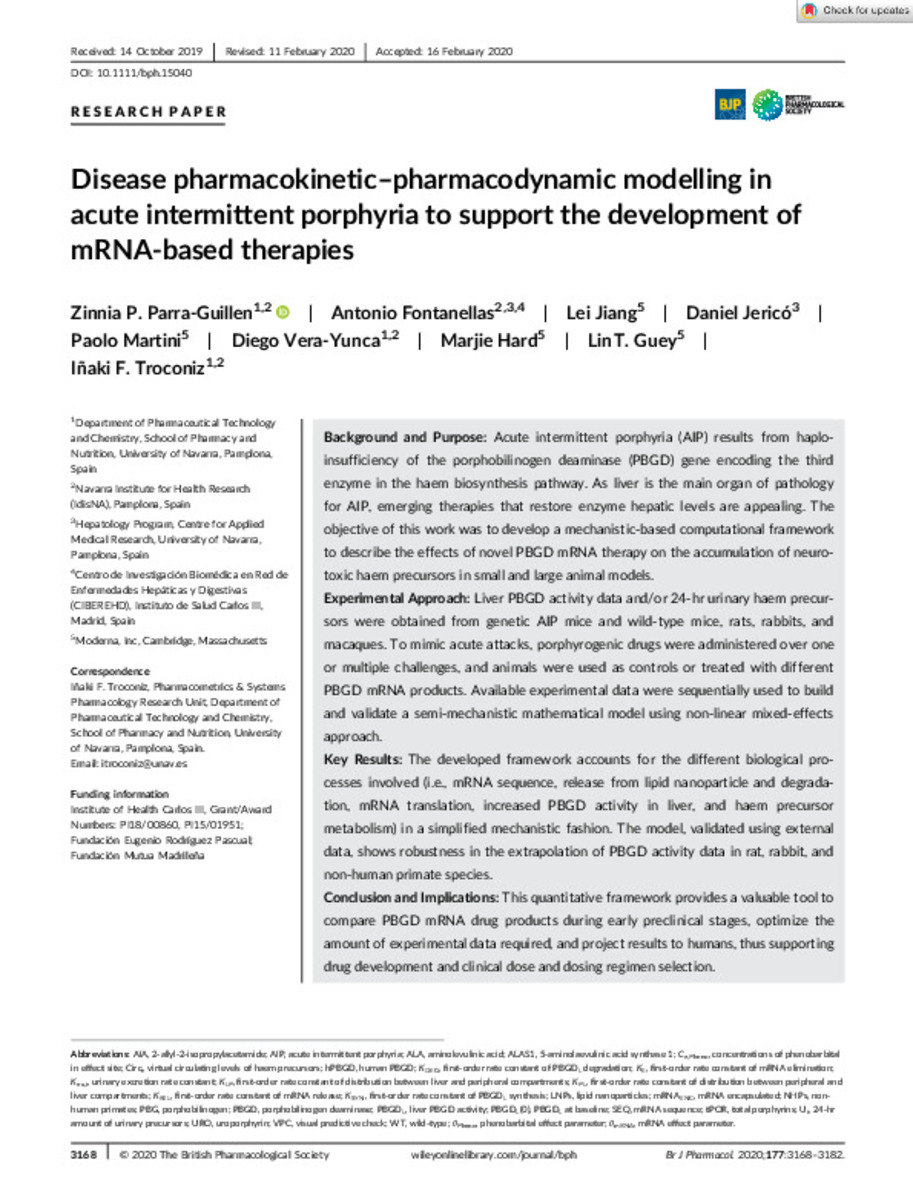Disease pharmacokinetic–pharmacodynamic modelling in acute intermittent porphyria to support the development of mRNA-based therapies
Keywords:
Porphyria
Porphobilinogen deaminase
mRNA-based therapies
2-allyl-2-isopropylacetamide
Aminolevulinic acid
Uroporphyrin
Project:
PI18/00860; PI15/01951
Citation:
Fernández-de-Trocóniz, J.I. (José Ignacio); Parra-Guillen, Z.P. (Zinnia Patricia); Fontanellas, A. (Antonio); et al. "Disease pharmacokinetic–pharmacodynamic modelling in acute intermittent porphyria to support the development of mRNA-based therapies". British Journal of Pharmacology. 177 (14), 2020, 3168 - 3182
Statistics and impact
0 citas en

0 citas en

Items in Dadun are protected by copyright, with all rights reserved, unless otherwise indicated.







